Blogs
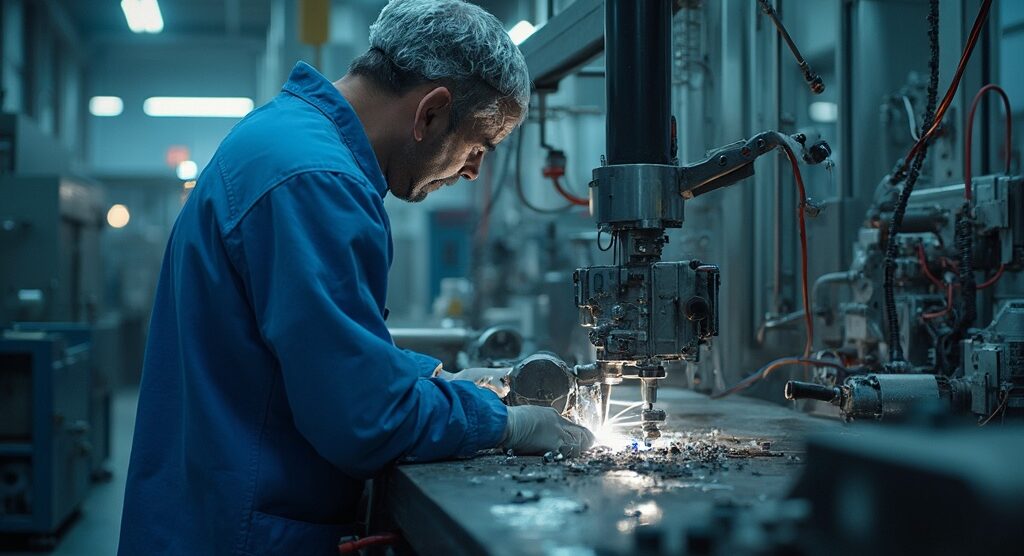
Understanding Invar 36 Properties: A Complete Tutorial for Engineers
Overview:
Invar 36 is characterized by its low thermal expansion coefficient, high dimensional stability, and excellent mechanical properties, making it ideal for precision engineering applications such as aerospace, optical devices, and cryogenics. The article highlights these unique properties and their implications for various industries, emphasizing the alloy’s significance in maintaining accuracy and reliability under temperature fluctuations.
Introduction
Invar 36, a specialized iron-nickel alloy, stands out in the realm of materials for its remarkable low thermal expansion properties, making it indispensable in applications where dimensional stability is paramount. As industries increasingly demand precision across varying temperatures, understanding the unique characteristics of Invar 36 becomes crucial for engineers and procurement managers alike. This article delves into the alloy’s key properties, its diverse applications—from aerospace to electronics—and the manufacturing processes essential for maximizing its performance.
Furthermore, a comparative analysis against other alloys highlights Invar 36’s distinct advantages, while strategic procurement considerations provide insights into sourcing this high-performance material effectively. By exploring these dimensions, professionals can make informed decisions that enhance operational efficiency and ensure compliance with industry standards.
Key Properties of Invar 36: Understanding Its Unique Characteristics
Alloy 36 is a specialized iron-nickel mixture noted for its remarkable low heat expansion characteristics, rendering it especially appropriate for uses requiring high dimensional stability across different temperatures. Its key characteristics include:
Thermal Expansion Coefficient: This alloy boasts a coefficient of thermal expansion (CTE) of approximately 1.2 x 10^-6 /°C, significantly lower than that of standard metals. This characteristic is crucial in environments with frequent temperature fluctuations, ensuring that components maintain their integrity and precision.
Mechanical Properties: The alloy exhibits commendable tensile strength and ductility, facilitating machining and shaping processes—a necessity in the manufacture of precision components. Typical hardness for half-hard substances ranges between 84 and 88 on the Rockwell B scale, underscoring its workability. Furthermore, the modulus of elasticity for annealed substances is 21.0 psi x 10, which is a significant factor when considering the performance of the substance under stress.
Magnetic Properties: As a ferromagnetic alloy, this alloy retains its magnetic properties even at low temperatures, making it advantageous for uses in magnetic sensors and related technologies.
Corrosion Resistance: Although this alloy offers moderate corrosion resistance, it is advisable to apply protective coatings in severe environments to enhance durability.
In contexts where this alloy is utilized, especially in explosive environments, the use of Non-Sparking Tools is imperative. These tools provide a safe alternative for operations that may pose a risk of ignition, ensuring compliance with safety standards. Grasping these characteristics is crucial for engineers and purchasing managers choosing a specific alloy for scenarios where minimal heat distortion is vital.
Recent research has emphasized the significance of these traits, especially in precision engineering, where the expansion coefficient statistics offer a distinct benefit over other substances. Additionally, practical insights from case studies on tapping recommendations suggest using a slightly larger tap drill than standard to accommodate metal flow, ensuring optimal performance and preventing binding during machining.
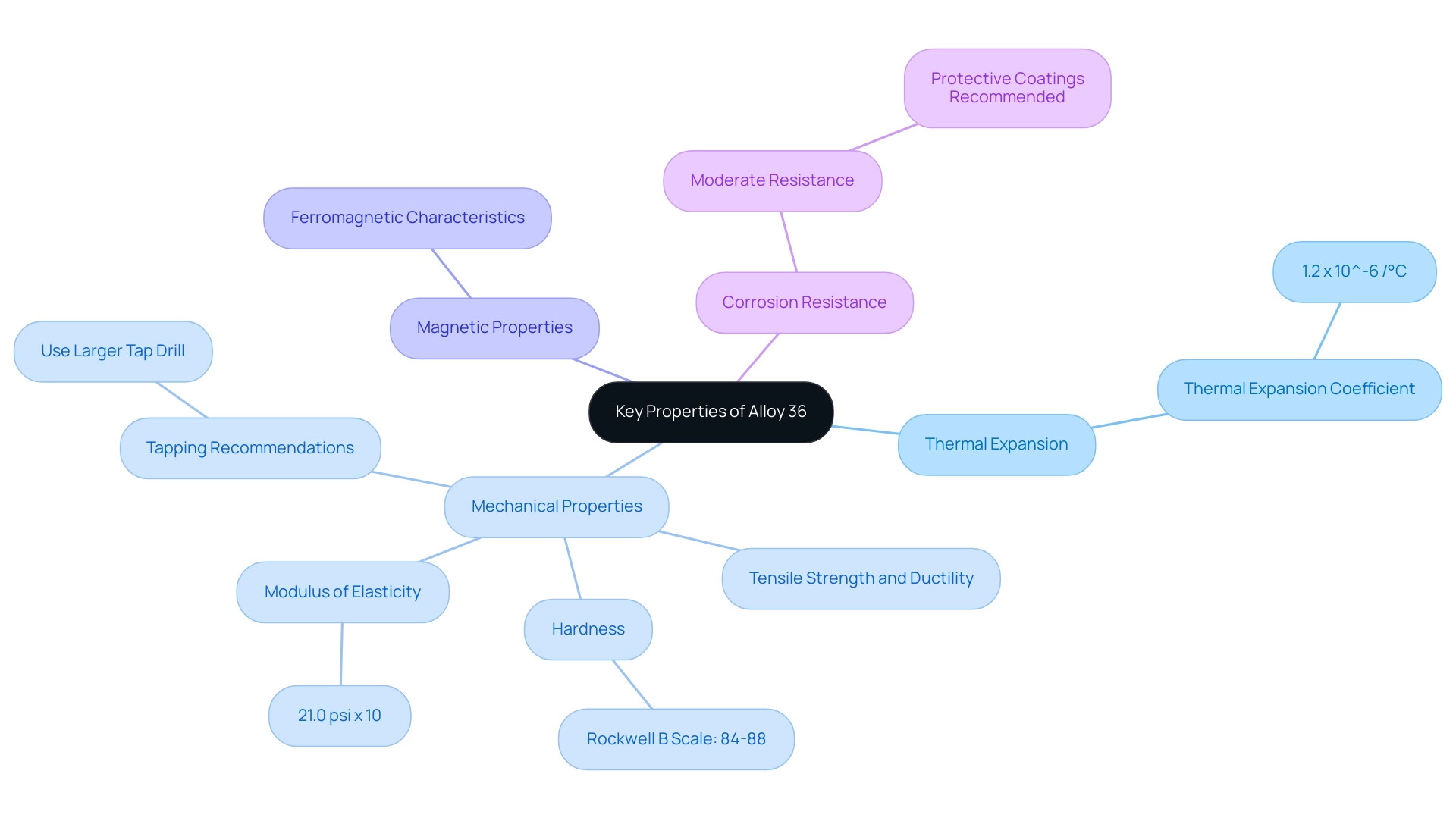
Applications of Invar 36: Where and Why It Matters
Invar 36 is integral to various sectors, with notable applications including:
Aerospace Engineering: Its low thermal expansion coefficient makes Invar 36 a vital material in the aerospace industry, particularly for satellite components and precision instruments. Aerospace engineers frequently highlight the Invar 36 properties for maintaining high dimensional stability across temperature fluctuations, which is a critical factor for mission success in 2024 and beyond. The relevance of Alloy 36 is underscored by the ISO standard ‘ISO 12858-1:2014’, which pertains to optics and optical instruments, highlighting its importance in precision manufacturing.
Precision Instruments: The accuracy of gauges and measuring devices relies heavily on materials like Alloy 36. Any thermal expansion can lead to significant inaccuracies, making this alloy essential in the manufacturing of high-precision tools. Recent advancements in Alloy 36 have improved its performance in these uses, aligning with industry standards. Dr. Yong He, a specialist in the preparation and post-processing of nuclear substances, emphasizes that “the stability of alloys is crucial for ensuring the reliability of precision instruments, particularly when considering Invar 36 properties.”
Optical Devices: The Invar 36 properties of this alloy, especially its stability under varying thermal conditions, make it a preferred choice for optical applications. Its use in lens mounts and sensitive optical components ensures that these devices maintain accuracy and reliability, which is crucial for both scientific and commercial endeavors. The importance of this material is further reinforced by a study comparing the microstructure and thermo-mechanical properties of alloy samples produced by additive manufacturing and traditional casting techniques.
Cryogenic Applications: In environments that require ultra-low temperatures, the Invar 36 properties of this alloy prove to be particularly valuable. Its ability to maintain structural integrity and performance under such conditions makes it indispensable in cryogenic engineering.
Electronics: The Invar 36 properties are essential in electronics, where the stability of circuit boards is paramount. This substance ensures that electronic devices can withstand thermal cycling without compromising performance.
Understanding these applications equips engineers with the knowledge to make informed material selections, enhancing performance and ensuring compliance with industry standards. As evidenced by recent studies, such as the investigation titled “Influence of Process Parameters on Alloy 36,” which explores how process parameters affect the mechanical properties of Alloy 36, optimizing its use is critical for achieving superior outcomes in various fields.
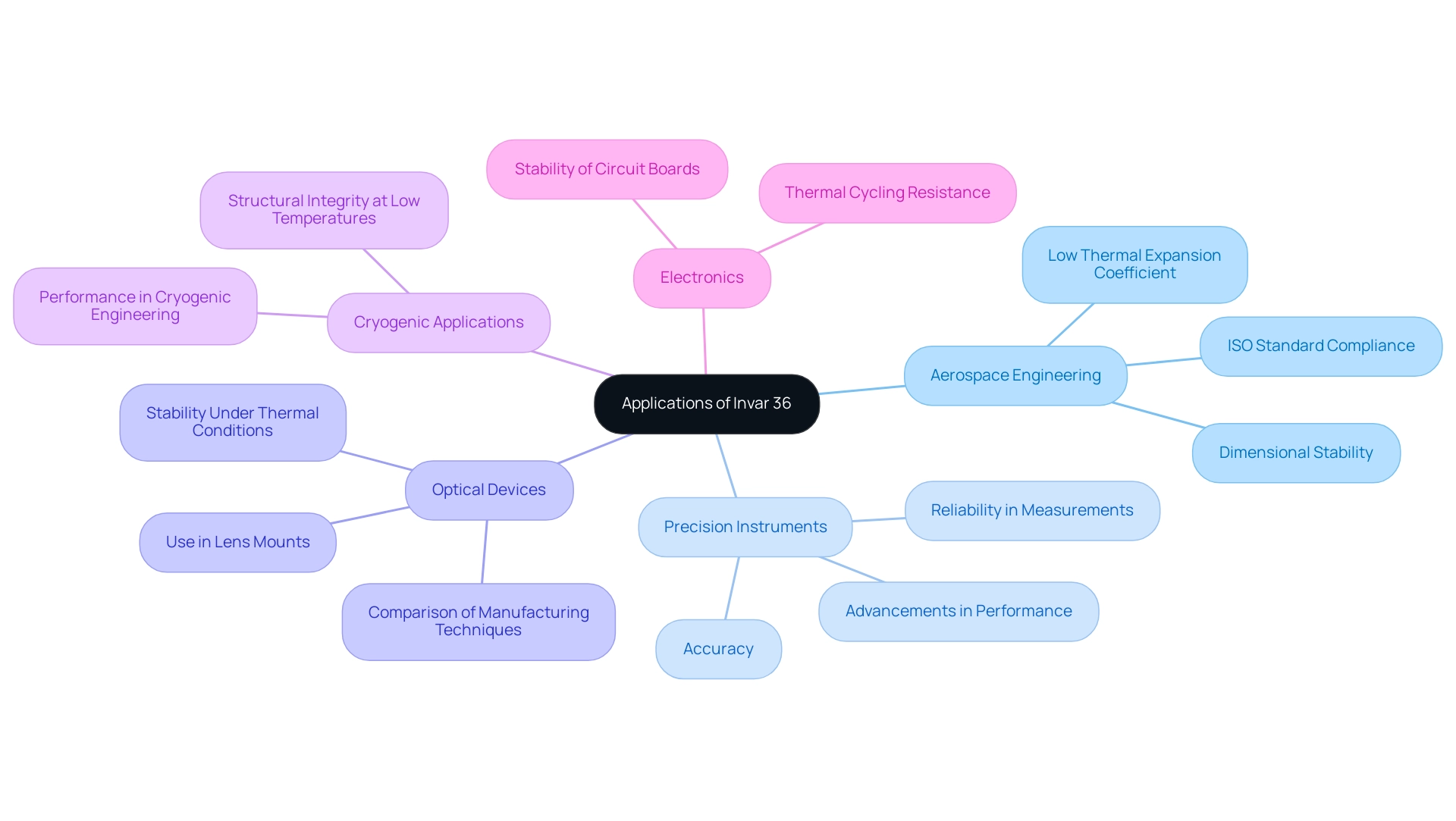
Manufacturing Processes for Invar 36: Techniques and Considerations
When engaging with Invar 36, it is essential to utilize specific manufacturing processes to preserve its distinctive properties:
Machining: Invar 36 can be machined using conventional techniques; however, employing tools crafted from high-speed steel or carbide is recommended to mitigate wear and enhance tool longevity. Recent advancements indicate that surface speeds can be increased by 2 to 3 times compared to typical high-speed recommendations, with feed rates potentially elevated by 50 to 100%. These adjustments can significantly optimize machining efficiency, making it crucial for procurement managers to consider these factors in their sourcing decisions.
Forming: Cold working techniques are favored for shaping this alloy because its invar 36 properties effectively maintain low thermal expansion characteristics while simultaneously enhancing strength. This process is critical for applications demanding precision and stability under varying temperature conditions.
Heat Treatment: Although heat treatment is generally unnecessary for alloy 36, vigilance is required during processes such as welding. Overheating can compromise the invar 36 properties, making careful temperature control necessary to safeguard performance. A study on the heat-affected zone of CFRP during femtosecond laser processing emphasizes the significance of controlled conditions, which is especially pertinent when contemplating heat treatment for alloy 36.
Joining Techniques: For effectively joining 36 components, methods like brazing and welding should be performed under rigorously controlled conditions. This practice helps prevent distortion and ensures dimensional stability, which are vital for engineers when designing components that utilize the invar 36 properties. As noted by a Global Consulting Firm, “Our company has been working with for some years now and we are very happy with the quality of the reports provided by the company.” Grasping these manufacturing methods is essential for optimizing the substance’s efficacy in real-world uses.
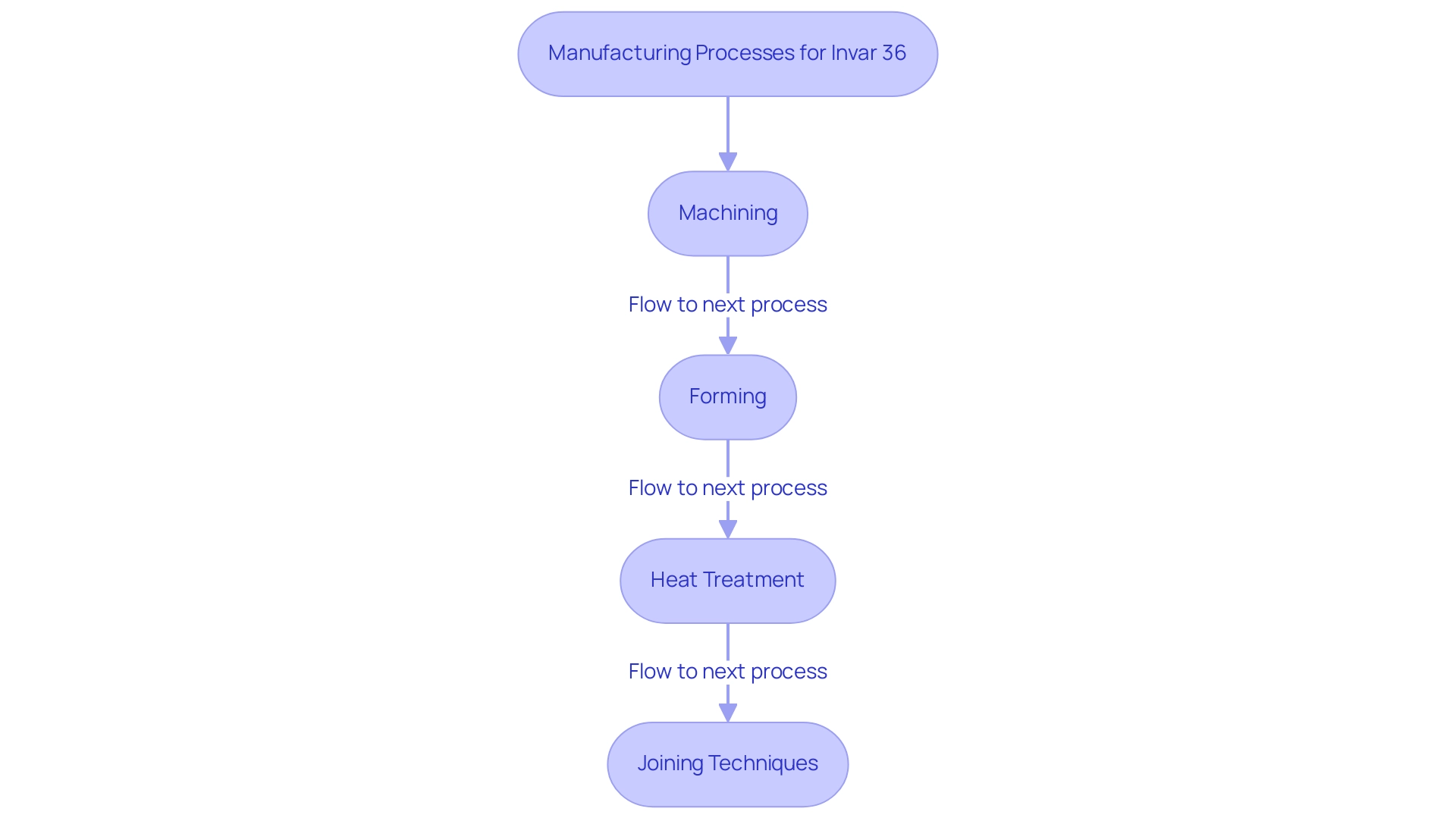
Comparative Analysis: Invar 36 vs. Other Alloys
Alloy 36 is often evaluated together with other metals utilized in high-precision contexts. The following comparisons highlight its distinct advantages:
The discussion focuses on the comparison of Invar 36 properties.
- Kovar: Both materials exhibit remarkably low thermal expansion coefficients. However, Kovar is preferred for applications involving glass-to-metal seals due to its compatibility with borosilicate glass. Conversely, Alloy 36, although more difficult to process, offers cost benefits and exceptional heat stability, rendering it essential in situations that require accuracy. Indeed, a case study named ‘Differences Between Kovar and Invar 36 properties’ demonstrates that the Invar 36 properties, including its low heat expansion coefficient, are perfect for temperature stability, although it is more difficult to process compared to Kovar, which is simpler to machine and more economical.
The discussion focuses on the comparison of Invar 36 properties.
- Stainless Steel: Although stainless steel is recognized for its excellent corrosion resistance, it possesses a significantly higher thermal expansion coefficient. This characteristic can lead to dimensional instability in crucial uses. Consequently, Alloy 36 is favored in environments where maintaining precise dimensions is paramount, despite its relatively lower corrosion resistance. The optimal roughness value obtained when machining this alloy is 0.8 mm at a cutting speed of 50 m/min and a feed per tooth of 0.06 mm/z, highlighting its machining capabilities in precise contexts.
The discussion focuses on the comparison of Invar 36 properties.
- Titanium Alloys: Recognized for their remarkable strength-to-weight ratios, titanium alloys are lacking in stability applications when contrasted with other materials. For precision devices that require strict temperature stability, Alloy 36, with its Invar 36 properties, emerges as the superior choice, demonstrating its reliability in demanding settings. As mentioned by Fernando Veiga, “From the dilatometry results, similar curves were obtained for the reference laminated substance and the product manufactured using GMAW-based WAAM technology,” further supporting the performance of Alloy 36 in thermal stability.
This comparative analysis provides engineers and procurement managers with the insights necessary to make informed selections, ensuring optimal performance in their projects.
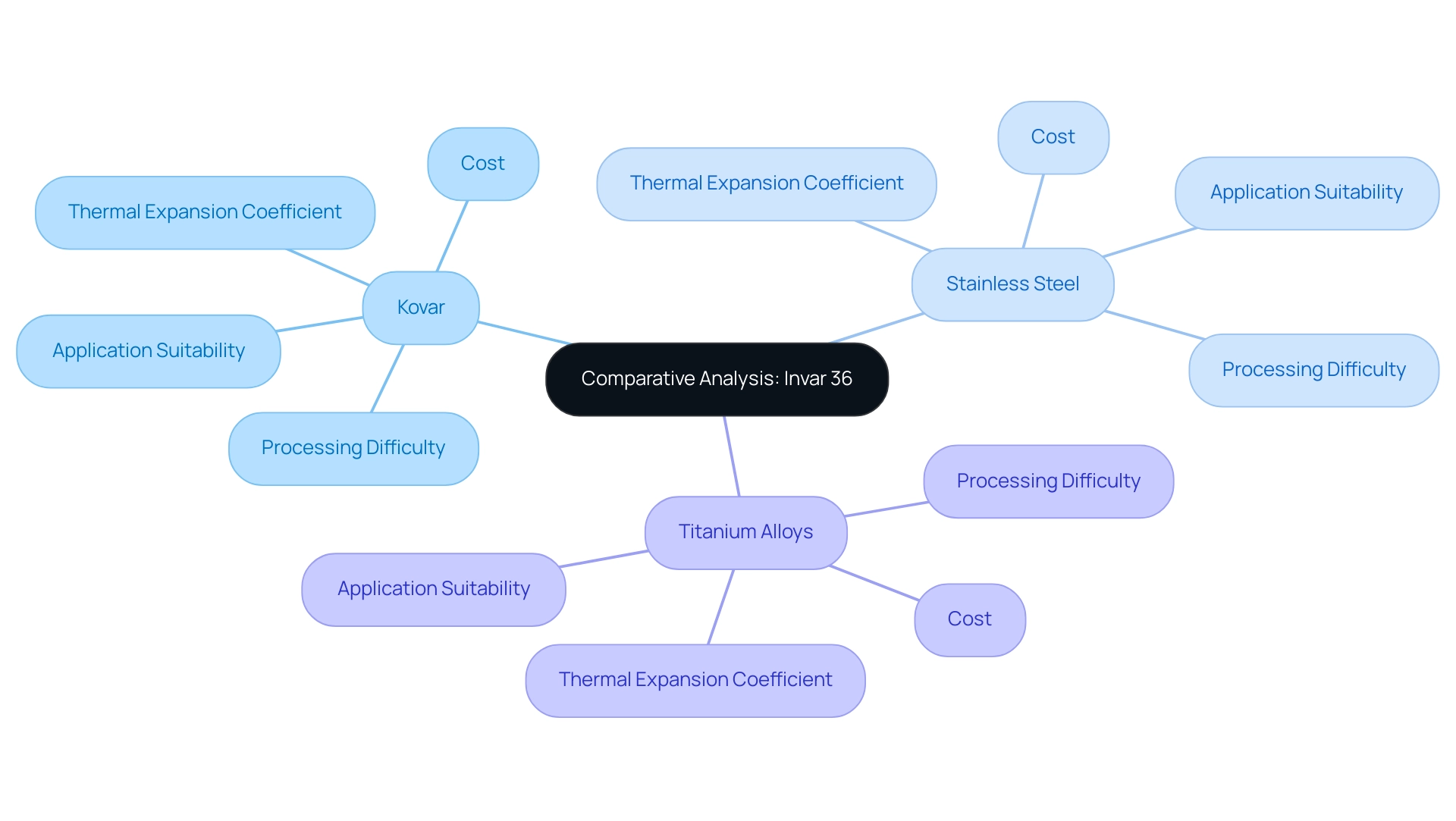
Procurement Considerations for Invar 36: Sourcing Strategies
When sourcing Invar 36, procurement managers must consider several critical factors to ensure optimal material selection and supplier engagement:
- Supplier Relationships: Establishing and nurturing long-term relationships with suppliers specializing in high-performance alloys is essential. Such collaborations can result in beneficial pricing structures, improved reliability, and steady access to high-quality resources, ultimately aiding the success of procurement strategies. As mentioned by a representative from a Global Consulting Firm, ‘Our company has been collaborating with suppliers of high-performance alloys for some years now and we are very pleased with the quality of the resources provided.’ Strong supplier relationships are key to maintaining quality and compliance.
- Compliance and Standards: It is imperative to verify that suppliers comply with international standards and certifications relevant to the industry, including ISO 9001. This compliance ensures that the resources obtained meet the necessary quality and performance benchmarks essential for high-stakes applications.
- Cost Management: Although alloy 36 often comes at a premium compared to alternative materials, its superior performance and Invar 36 properties can justify the investment. According to recent market analysis, while the average cost of alloy 36 has increased by 15% due to nickel price fluctuations, conducting a total cost of ownership analysis allows procurement managers to evaluate long-term savings and return on investment, thereby making informed decisions. This analysis can reveal that the durability and performance of alloy 36 can lead to reduced maintenance costs over time.
- Market Trends: Staying informed about current market trends is crucial, particularly as fluctuations in nickel prices can greatly influence the availability and pricing of alloy 36. By comprehending these dynamics, procurement experts can predict shifts in the market and obtain the finest resources for their projects effectively. For example, a recent case study emphasized how a company effectively managed a supply chain disruption by utilizing robust supplier relationships to obtain specific components at a competitive price, ultimately ensuring project timelines were achieved.
By applying these procurement strategies, procurement managers can effectively navigate the complexities of sourcing Invar 36 properties and ensure that they are equipped with the best materials for their critical projects.
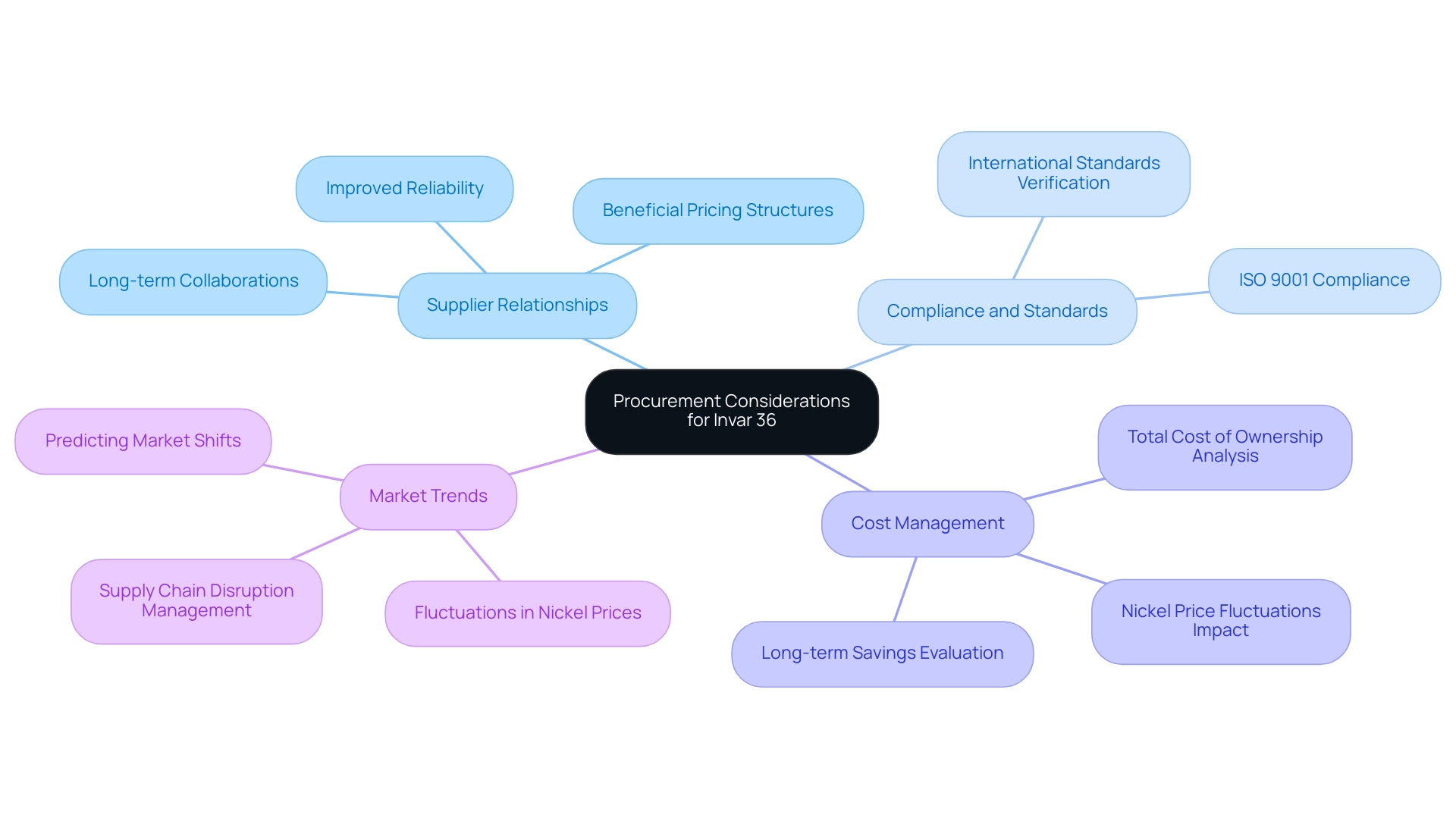
Conclusion
Invar 36 is a material that exemplifies the intersection of precision and performance, making it a crucial choice across various high-stakes industries. Its distinctive low thermal expansion properties ensure dimensional stability, which is indispensable in applications ranging from aerospace engineering to precision instruments. The alloy’s mechanical, magnetic, and corrosion-resistant characteristics further enhance its applicability, providing engineers with a reliable solution for demanding environments.
The versatility of Invar 36 is underscored by its diverse applications, including:
- Aerospace components
- Optical devices
- Electronics
Each sector benefits from the alloy’s ability to maintain integrity under varying temperatures, ensuring the reliability and accuracy of critical components. Furthermore, the comparative analysis against other alloys emphasizes Invar 36’s superiority in thermal stability, reinforcing its status as a preferred material for precision engineering.
Effective procurement strategies are essential for sourcing Invar 36, given its specialized nature and market fluctuations. Key steps for procurement managers include:
- Establishing strong supplier relationships
- Ensuring compliance with industry standards
- Conducting thorough cost analyses
By understanding these dynamics, professionals can secure the best materials and optimize their operations, ultimately driving success in their projects. Investing in Invar 36 not only enhances performance but also contributes to long-term operational efficiency, making it a strategic choice for those committed to excellence in engineering and manufacturing.




